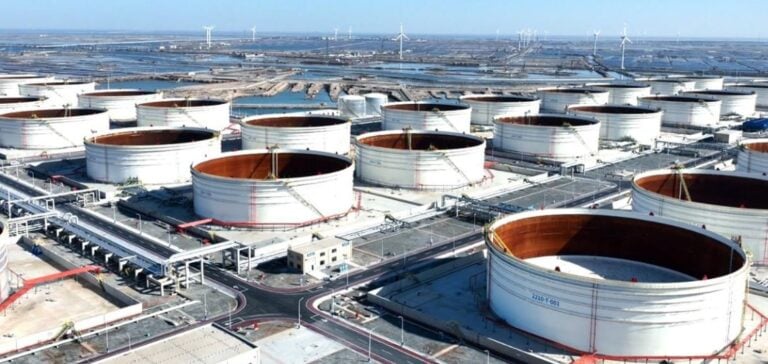According to official data, 1.08 million bpd were added to commercial and strategic reserves in May, compared with 830,000 bpd in April. In the first five months of 2024, inventories rose by 790,000 bpd compared with 2023, accelerating after 700,000 bpd in the first four months. This trend underlines the extent to which additional volumes are being channelled to storage facilities rather than to refineries for processing. In addition, several OPEC countries are counting on China to support oil demand.
Imports down, refineries idle
This massive stockpiling, coupled with the fall in imports in the first half of the year, calls into question forecasts of strong growth in Chinese demand in 2024. Crude imports fell by 1.2% over January-May to 11 million bpd compared with the same period in 2023. Moreover, China had increased its crude oil import quotas in 2023.
Refinery throughput also fell by 50,000 bpd to 14.49 million bpd, as maintenance work weighed on activity in May. This month, a number of major refineries underwent scheduled technical shutdowns, contributing to the drop in the overall utilization rate. However, this situation should be temporary, with a recovery expected once the work is completed.
Uncertain economic outlook
The Organization of the Petroleum Exporting Countries (OPEC) is still forecasting Chinese demand growth of 720,000 bpd in 2024. However, this estimate could be revised downwards if the Chinese economy does not accelerate sufficiently in key oil-consuming sectors.
An economic recovery in the second half of the year, driven by construction, air transport and manufacturing, remains likely, but its scale will determine whether the optimistic forecasts for oil demand materialize. More moderate growth could challenge some analysts’ expectations.
Tracking the Chinese dynamic
Oil market watchers will be keeping a close eye on Chinese economic indicators over the coming months. The strength of the recovery will be closely watched, particularly in energy-intensive sectors such as construction and transport.
Improved prospects for GDP growth and manufacturing activity could boost consumption of fuels and petrochemicals. However, a disappointing trajectory would weigh on demand for crude and increase downward pressure on international oil prices.
Adjustments to forecasts
Given the weaker-than-expected start to the year, some institutions have already begun to revise their demand forecasts for China. The International Energy Agency (IEA) is now forecasting growth of around 500,000 bpd in 2024, around a third less than OPEC’s estimate.
Further downward adjustments could follow if signs of an economic slowdown persist in the second half. In this case, excess volumes could continue to swell Chinese oil reserves, putting further pressure on world crude prices.
This situation underlines the crucial importance of Chinese demand for the global balance between oil supply and demand. An acceleration or slowdown in the world’s second-largest economy would have major repercussions on the fundamentals of the global oil market.






















